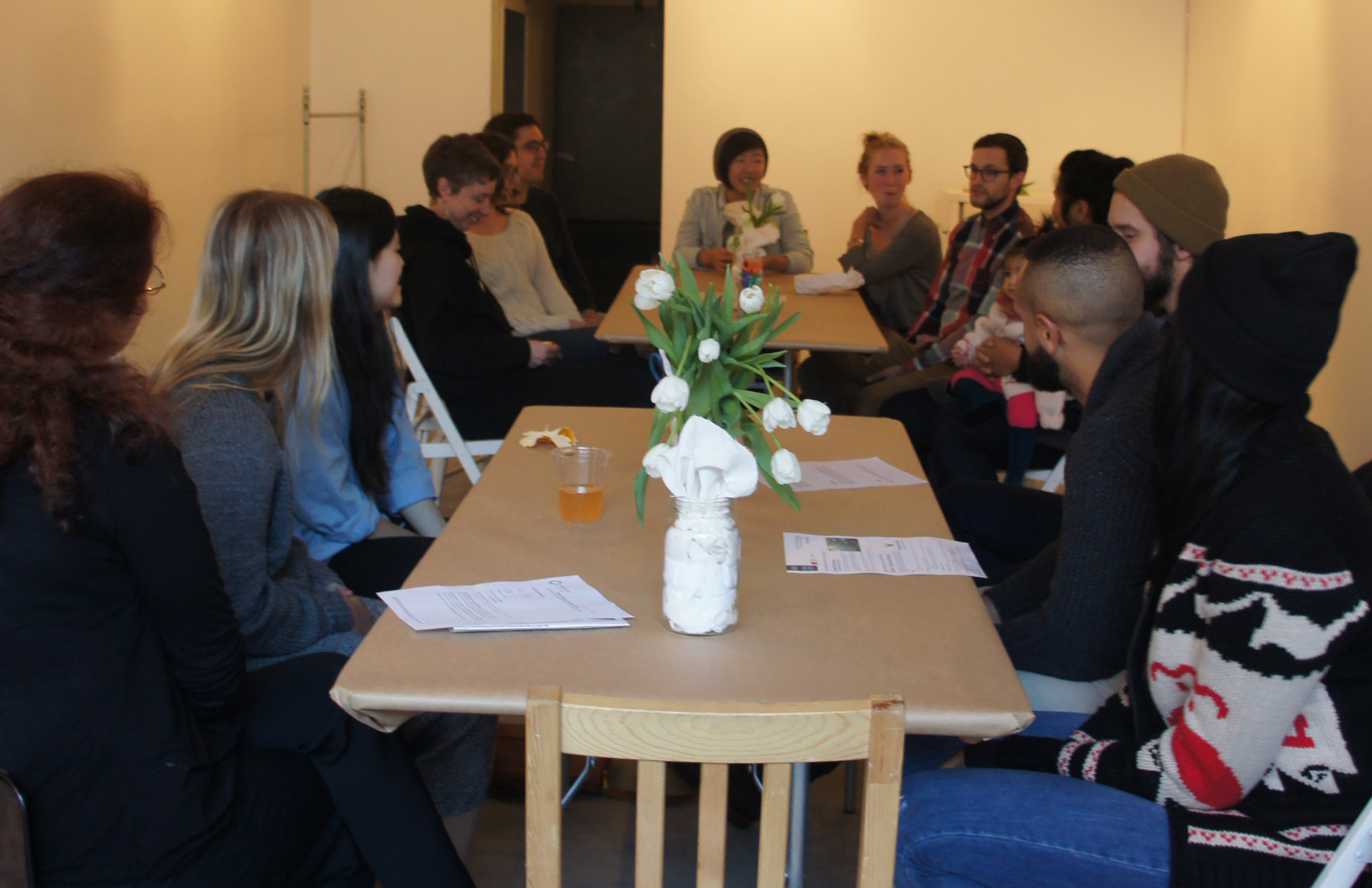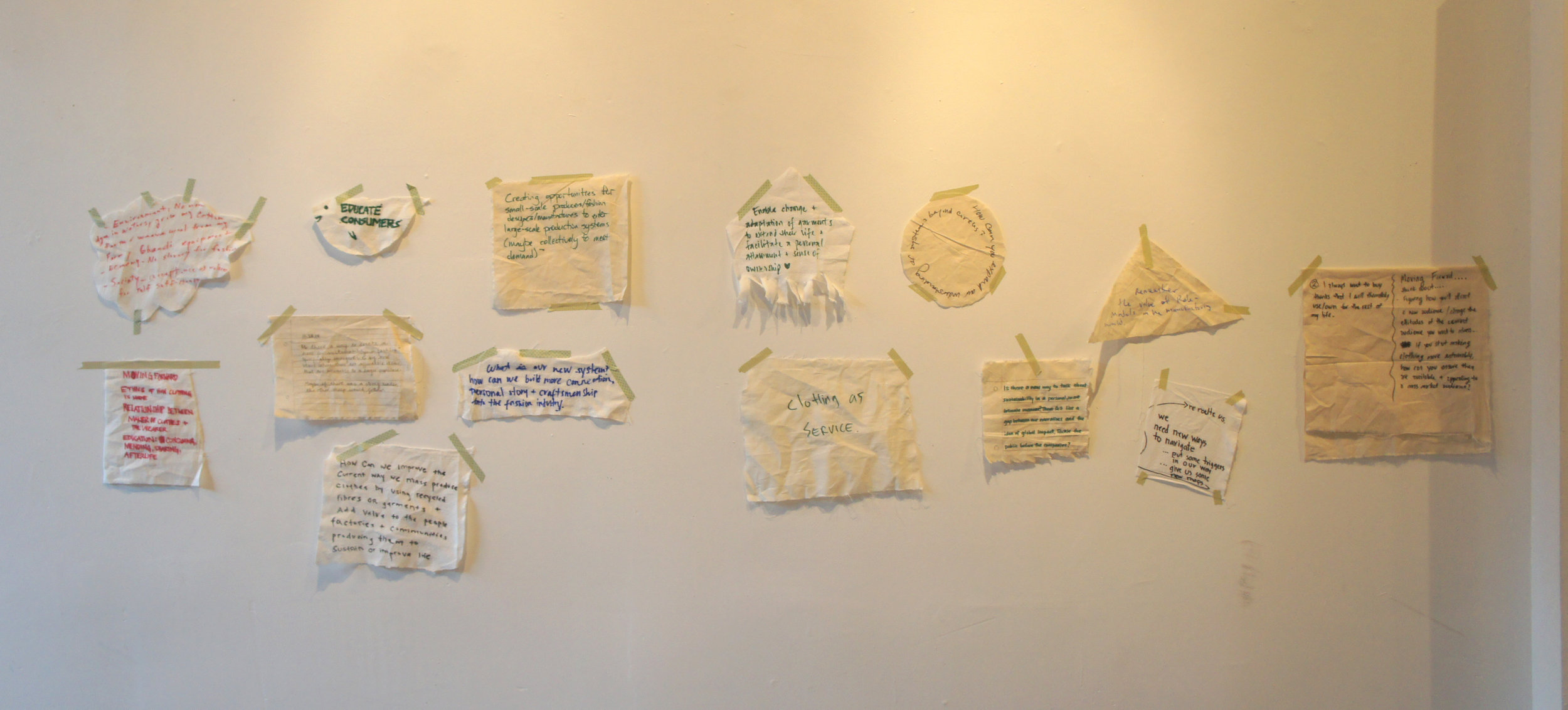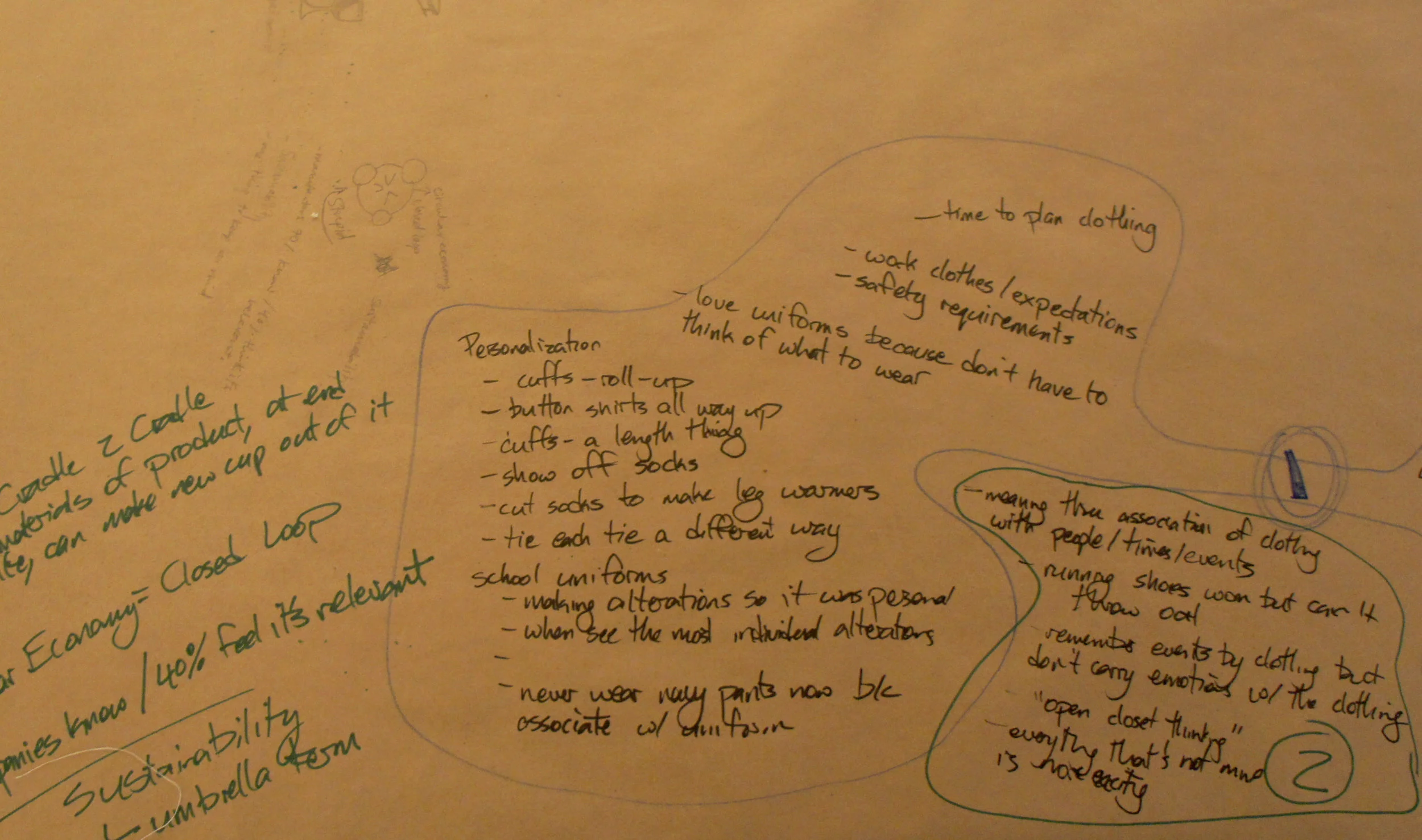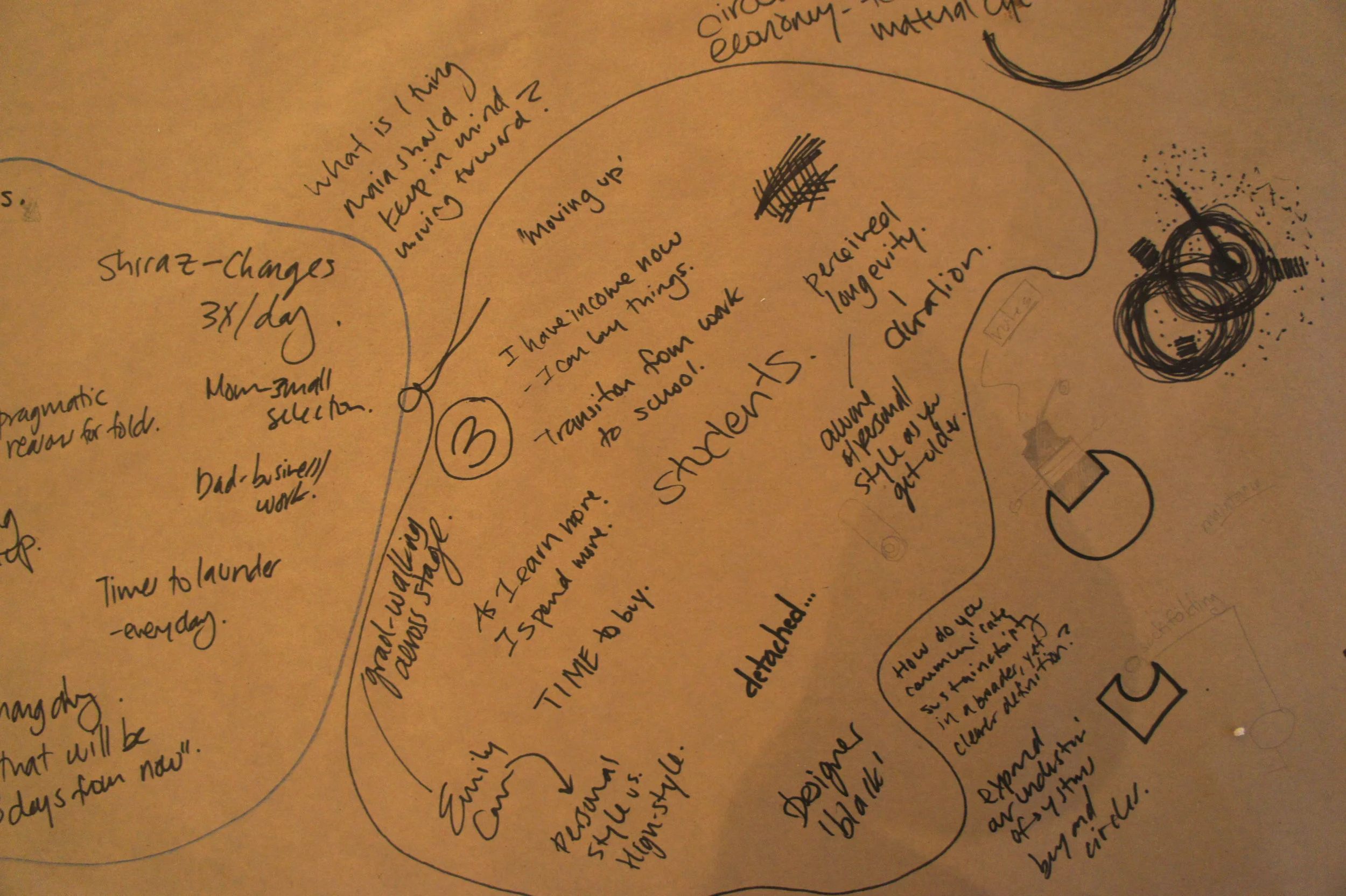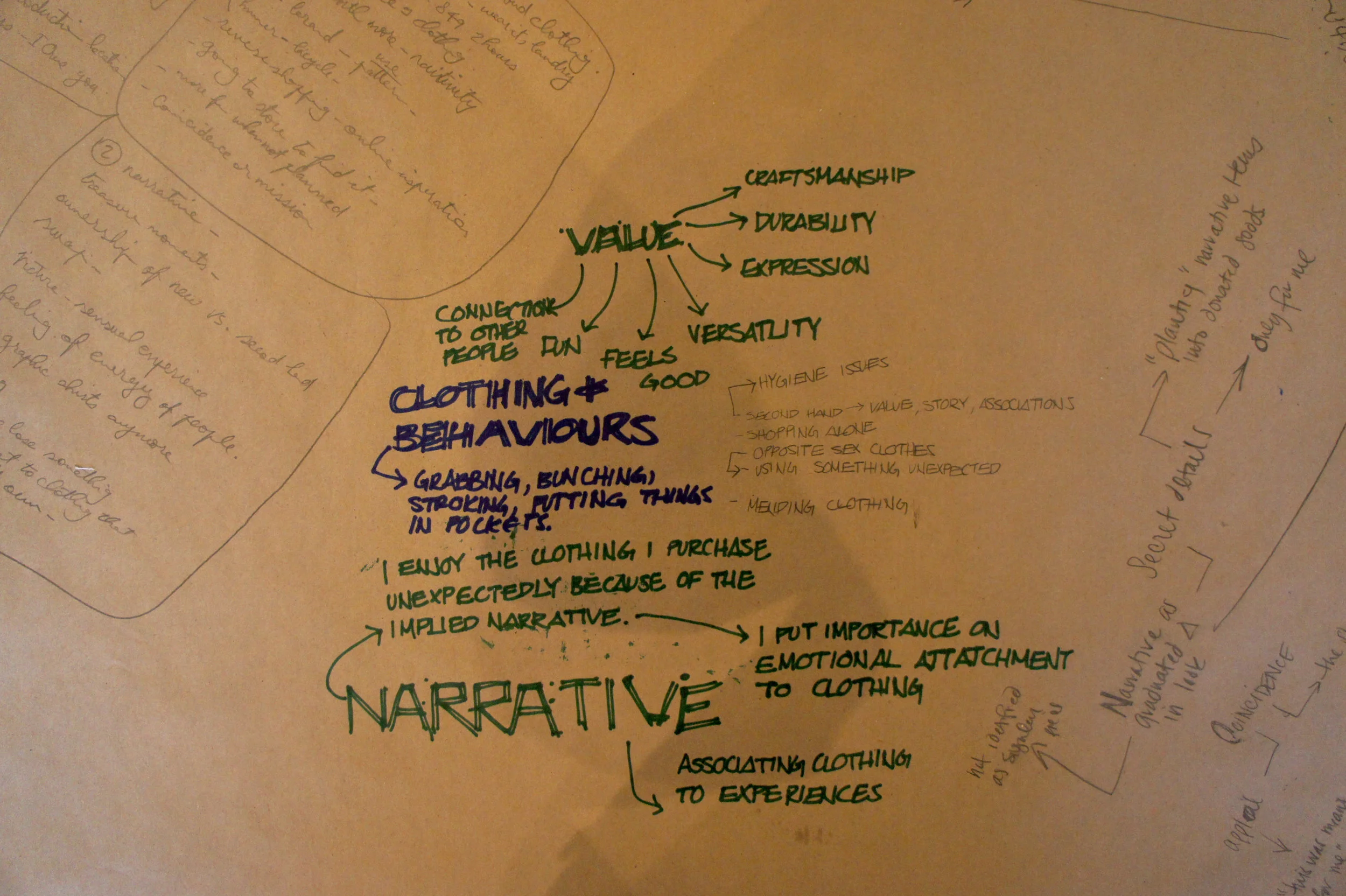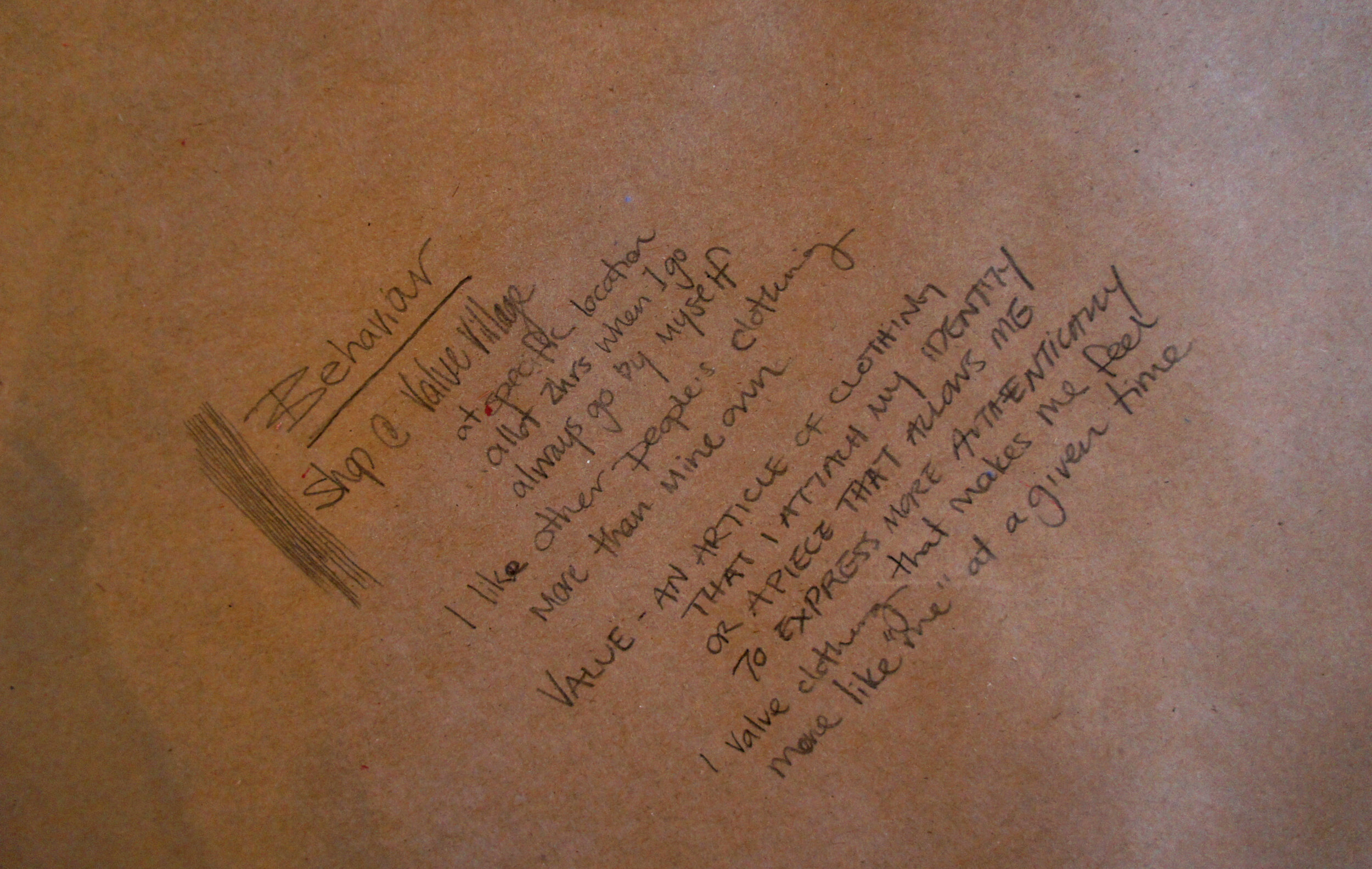Co-creation sessions and design workshops take many forms. I use them to engage with clients and end users (sometimes simultaneously). Each workshop is unique, but they consistently serve to empower participants to share their perspective, and their needs. In client settings they can be used to align teams.
Co-creation sessions and design workshops are used to engage a group of invested participants, from end-users, to clients, to design teams. These methods allow for rapid ideation and collaborative conversations that create shared understanding amongst teams and those they design for. I use co-creation to empower end users to share their perspective and to create alignment with stakeholders. This example was a workshop I designed and facilitated to discuss clothing and sustainability with a group in Vancouver as part of my graduate thesis research.
PROCESS
Using a Dialogue format this workshop engaged local researchers, designers, and interested individuals in conversation around sustainability and clothing. The dialogue followed three key questions, with active drawing and note taking on group tables. The workshop finished with a round of key themes/wishes for the future of sustainability in fashion.
OBJECTIVES
Gather stories of individual’s clothing use
Understand how people talk about fashion and garments in group settings
Determine relevance and relatability of language being used in research project
Collect themes relevant to eco-conscious users
PARTICIPANTS
16 participants
Ages 4-65
4 male, 12 female
Professions include: designers, researchers, students, design faculty
AGENDA
Welcome and Introduction: Personal Hello’s and quick conversations, a chance to grab drink and a snack 2 - 2:10
Introduction: from Maia and Sincerely Slow 2:10 - 2:15
Dialogue: 3 questions discussed and explored in groups (1 -2 groups) depending on turnout), someone volunteers to document on the tables 2:15 - 3:45
1. Behaviour: what sorts of habits do you have around clothing, and how did you develop those habits? (examples might include, consumption patterns, unique ways of wearing, laundering, or other uses of clothing?)
2. Narrative: How do you develop emotional attachment to clothing, when do you know that you have reached the point of attachment, and what is the role of narrative in connecting you to the clothes you wear.
3. Value: How is it that you determine value in your life, how does that relate to the clothing you own and wear.
Thank you and photo release signing: 3:45 - 4pm
OUTCOMES
The dialogue created a sense of community amongst participants who each had some interest in fashion and sustainability. It allowed for new perspectives to be voiced outside of the typical day-to-day investigation. The workshop structure was overall effective in addressing the objectives, however participants struggled to relate to the question of emotional attachment. It seemed to be either too abstract or too intimate for the context. The most engaging stories and collaborative conversations arose from tales of function or habit.
Key Themes:
Relationship between maker and wearer
Ethics in clothing manufacturing
Education on re-use, mending, sharing
New system proposals with more connection, personal story and craftsmanship
Improving current way we mass produce clothing
Recycling of fibres
Creating opportunities for small-scale producers/designers
New ways to talk about sustainability , global and local impact
Longterm/lifetime use
Personalization and uniforms

